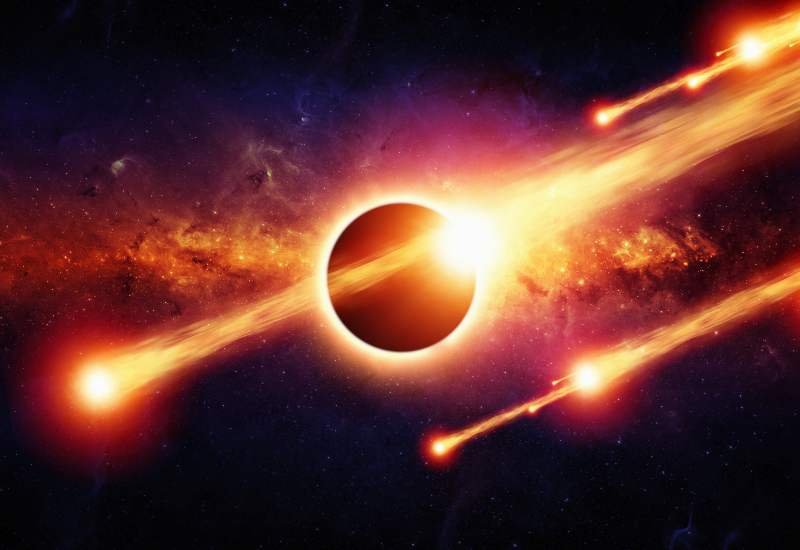Growing Impact of the Space Economy on Health, Technology, and Environment
Poonam Junjunwala
. 3 min read
The Space Foundation, a non-profit organization, estimates that the space economy was worth $469 billion in 2021, which is a nine percent increase from its value in 2020 and the highest recorded growth rate since 2014. Even though the space economy creates the majority of its value at the moment by making activities on Earth possible or more enjoyable, a significant portion of the space economy's value in the future may come from activities that take place entirely in orbit. By leveraging the power of cam chat, professionals can enhance their ability to work together effectively and accelerate the progress of space-related activities, ultimately contributing to the growth and advancement of the space economy both on Earth and in orbit.

Growing Impact of the Space Economy
1. Exploring the Impact of Space Travel on Human Health
Microgravity, radiation, and the lack of human contact that comes with space travel all have an impact on astronauts. Some of the changes in their bodies are comparable to the health issues that are associated with getting older or leading a sedentary lifestyle. Experiments in science carried out on astronauts while they are in space contribute to a better understanding of medical conditions on Earth.
2. Revolutionary Advancements in Breast Cancer Screening and Treatment
IGAR is a teleoperated medical robot that was developed using the same technology that was used to develop Canadian space robots. It is capable of performing very precise biopsies in order to detect breast cancer. IGAR is able to perform procedures that are highly accurate and only minimally invasive, thereby reducing the amount of pain and discomfort experienced by the patient.
3. Preserving Ecosystems and Wildlife with Satellite Technology
Alterations are taking place in the ecosystems of the Earth, which will have an impact not only on people but also on animals. We are able to monitor changes and encourage the preservation of land and natural resources with the help of satellites, which enables us to protect our ecosystems and all forms of life that exist on Earth.
4. Monitoring Climate Change from Space
Astronauts have been able to observe firsthand the changes that are taking place on Earth from their vantage point in space, such as the dramatic reduction in the size of the Aral Sea and the Arctic sea ice extent. Satellites collect data that is essential to understanding how our planet is changing. This information is invaluable for advancing cutting-edge science, making climate projections.
5. Everyday Products that Originated from Space Research
The following is a short list of potential applications of space technology:
1. Air purifiers: An ethylene scrubber that was originally developed for use on the International Space Station (ISS) has since been shown to be effective at cleaning the air here on Earth.
2. Enriched baby formula: While developing life support systems for long-duration missions, researchers discovered a natural source for an omega-3 fatty acid that is now incorporated into more than 90 percent of baby formulas on the market. This discovery led to the development of enriched baby formula.
3. Memory foam: Researchers first came up with the idea for memory foam when they were searching for ways to keep test pilots cushioned while they were flying.
4. Cordless vacuum cleaners: In order to collect samples of rocks and soil from the moon's surface, researchers developed a lightweight battery-powered drill. Cordless vacuum cleaners: In later years, the motor technology was adapted for use in cordless vacuums.
6. Discoveries and Advancements in Science from Space Exploration
New scientific discoveries are a significant upside to conducting research in space. The data gathered by space probes, telescopes, rovers, and other instruments consistently calls into question our preconceived notions. Over the course of the past few decades, we have come to understand that the number of galaxies, stars, and planets in the universe is significantly higher than we had originally estimated.
Regarding both Health and Medicine
1. Humans have been able to create new medical technologies as a direct result of their participation in space exploration.
2. An infrared thermometer was developed so that one could measure the temperature of the body without having to make physical contact with it.
3. As a result of the research that was conducted during space exploration, medical devices such as kidney dialysis machines and miniature cameras that can photograph the internal organs of the human body have been developed.
4. The technology that is used to insulate the space stations is the basis for the construction of the materials that are used to keep our homes warm.
Conclusion
In conclusion, the space economy is rapidly growing and has the potential to impact various fields such as health, technology, and climate change. The exploration of space has led to advancements in medical technologies, such as the development of an infrared thermometer and medical devices like kidney dialysis machines. In addition, space exploration has led to the discovery of new scientific knowledge, which challenges our preconceived notions and expands our understanding of the universe. As the space economy continues to grow, we can expect further advancements and discoveries that will benefit society and push the boundaries of our knowledge.
More Stories from
What are the Conditions that Led to the Formation of the Asteroid Belt?
Asteroid belt contains rock fragments from early solar system, mostly orbit in a band called Main Asteroid Belt from Mars to Jupiter.
Exploring the Final Frontier: A Glimpse into the World of Space Research
From probing distant galaxies with space telescopes to charting the potential for human life on other planets, this article provides a glimpse into the evolving field of space research.
Connected Cosmos: Embracing the Future of Space Exploration with Video Chat
Discover the potential for human colonization of other planets, breakthrough propulsion systems, and the expansion of our knowledge of the universe through space-based astronomy.
Chandrayaan-3: India's Ambitious Lunar Mission for Scientific Exploration
Chandrayaan-3, India's third lunar mission led by ISRO, aims to overcome past challenges and demonstrate soft landing capabilities on the Moon.







.png?width=40&aspect_ratio=1:1)


